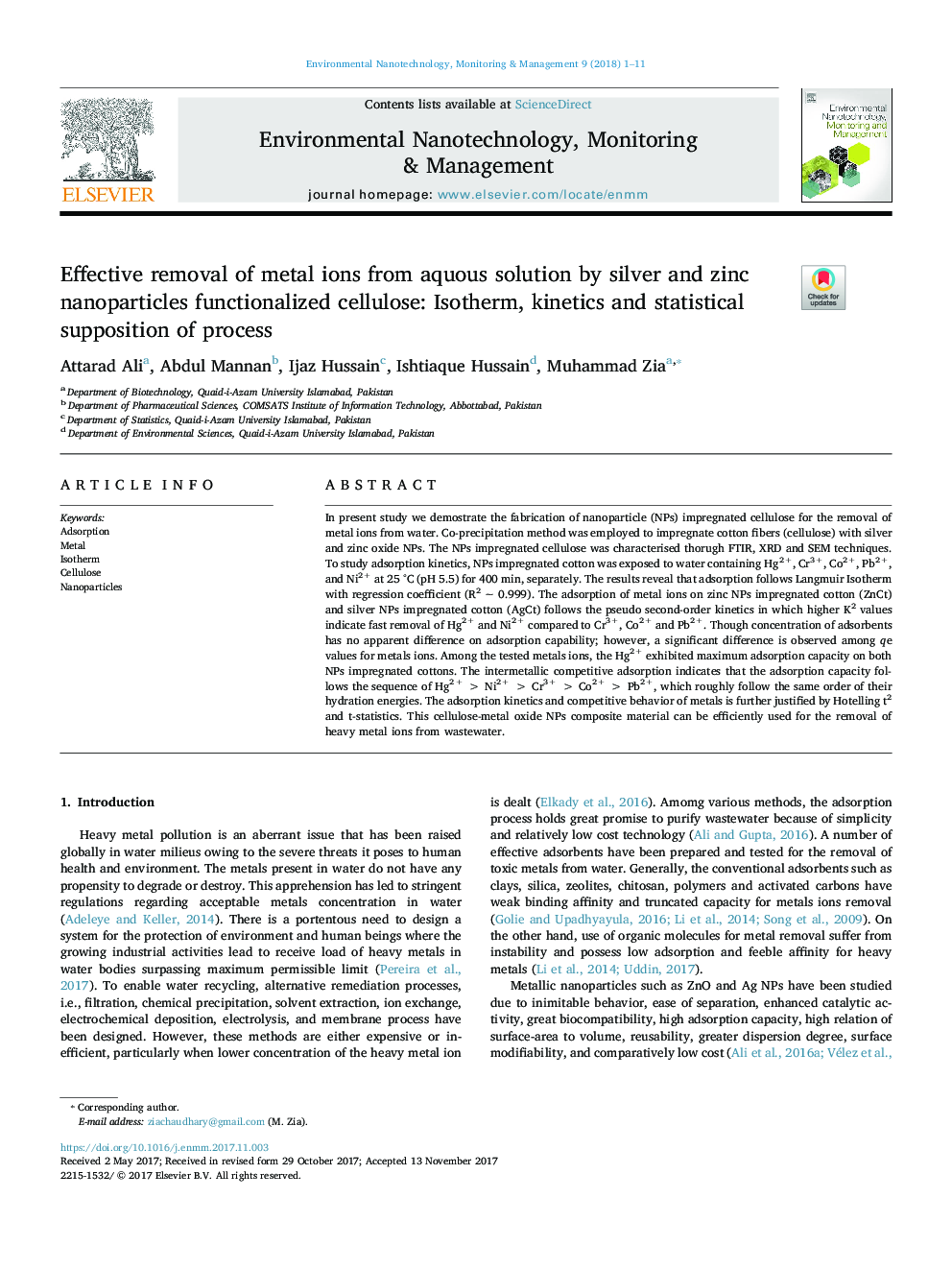| Article ID | Journal | Published Year | Pages | File Type |
|---|---|---|---|---|
| 8855642 | Environmental Nanotechnology, Monitoring & Management | 2018 | 11 Pages |
Abstract
In present study we demostrate the fabrication of nanoparticle (NPs) impregnated cellulose for the removal of metal ions from water. Co-precipitation method was employed to impregnate cotton fibers (cellulose) with silver and zinc oxide NPs. The NPs impregnated cellulose was characterised thorugh FTIR, XRD and SEM techniques. To study adsorption kinetics, NPs impregnated cotton was exposed to water containing Hg2+, Cr3+, Co2+, Pb2+, and Ni2+ at 25 °C (pH 5.5) for 400 min, separately. The results reveal that adsorption follows Langmuir Isotherm with regression coefficient (R2 â¼Â 0.999). The adsorption of metal ions on zinc NPs impregnated cotton (ZnCt) and silver NPs impregnated cotton (AgCt) follows the pseudo second-order kinetics in which higher K2 values indicate fast removal of Hg2+ and Ni2+ compared to Cr3+, Co2+ and Pb2+. Though concentration of adsorbents has no apparent difference on adsorption capability; however, a significant difference is observed among qe values for metals ions. Among the tested metals ions, the Hg2+ exhibited maximum adsorption capacity on both NPs impregnated cottons. The intermetallic competitive adsorption indicates that the adsorption capacity follows the sequence of Hg2+ > Ni2+ > Cr3+ > Co2+ > Pb2+, which roughly follow the same order of their hydration energies. The adsorption kinetics and competitive behavior of metals is further justified by Hotelling t2 and t-statistics. This cellulose-metal oxide NPs composite material can be efficiently used for the removal of heavy metal ions from wastewater.
Related Topics
Life Sciences
Environmental Science
Environmental Chemistry
Authors
Attarad Ali, Abdul Mannan, Ijaz Hussain, Ishtiaque Hussain, Muhammad Zia,
